Procedure to Make New Procedures
-
Who Completes This Task: All Employees
Timeframe:
Process
Staff deserve a method to improve the systems they function in, as well as the support of senior administrators to make improvements. Staff also deserve to know how and when a change in procedure will impact them, to have input into the process, and to prepare for the change in a thoughtful manner. During the review part of this process, the chief financial officer (CFO) will determine if a procedure is sufficient, or if a board-approved policy is required.
Steps – Proposal
Any employee can propose a new or revised procedure- Use any format that makes sense
- Submit via email to finance@spps.org
Steps – Review
Proposal is forwarded to a committee appointed by the CFO for review- May be simple or in-depth depending on the scope of the procedure
- Proposals are evaluated based on:
- Need for procedure
- Impact to students
- Impact to staff
- Improving efficiency in operations
- Unique circumstances
- The committee responds upon receipt and updates monthly if review is extensive
- CFO provides guidance by email to the submitter and the committee
Steps – Development
- A lead person is identified to develop the full procedure
- A team from business, schools, and departments develops the procedure
- Must include
- Why the procedure is needed
- Who will be impacted
- Procedure details
- Training and support necessary for successful implementation
- Forms, worksheets, checklists, or documentation protocols should be included
Steps – Recommendation
- Procedure development leader submits the final recommendation to the CFO
- The CFO may
- Recommend implementation
- Recommend escalation (to the chiefs, cabinet, or superintendent)
- Refer it back to the committee for changes
Steps – Adoption
- The final draft is adopted as an SPPS procedure with a definite implementation date
- Forms and worksheets are prepared and available
- The new procedure is broadly and clearly communicated to staff
- A key point of contact is identified for questions, comments and suggestions
- Any necessary training is done (classroom, webinar, instruction guides, etc.)
Steps – Implementation
- On the implementation date, the new procedure will be the only procedure used in SPPS
- The key point of contact will be available to support staff with training and coaching
- Failure of staff to adopt the new procedure may result in
- Additional training
- Additional supports
- Disciplinary action
- A period of adjustment is expected
Steps – Evaluation
- New procedures must be evaluated for their impact on operations, staff and students
- Unintended consequences, bugs, and general hiccups identified during implementation are reported to the point of contact for evaluation
- Further work on the procedure may be necessary
- Clarification of duties
- Change in training
- A procedure that works for everyone will be kept
- A procedure will not be kept simply because a lot of time and work went into it
Why This Is Important
-
- The people who regularly complete a process have useful insight for improvement
- Using standardized procedures ensures uniformity of the end result
- Creation of procedures without oversight can result in multiple conflicting instructions for the same task, and increases the chance that important steps may be missed
Last Modified on October 3, 2018




